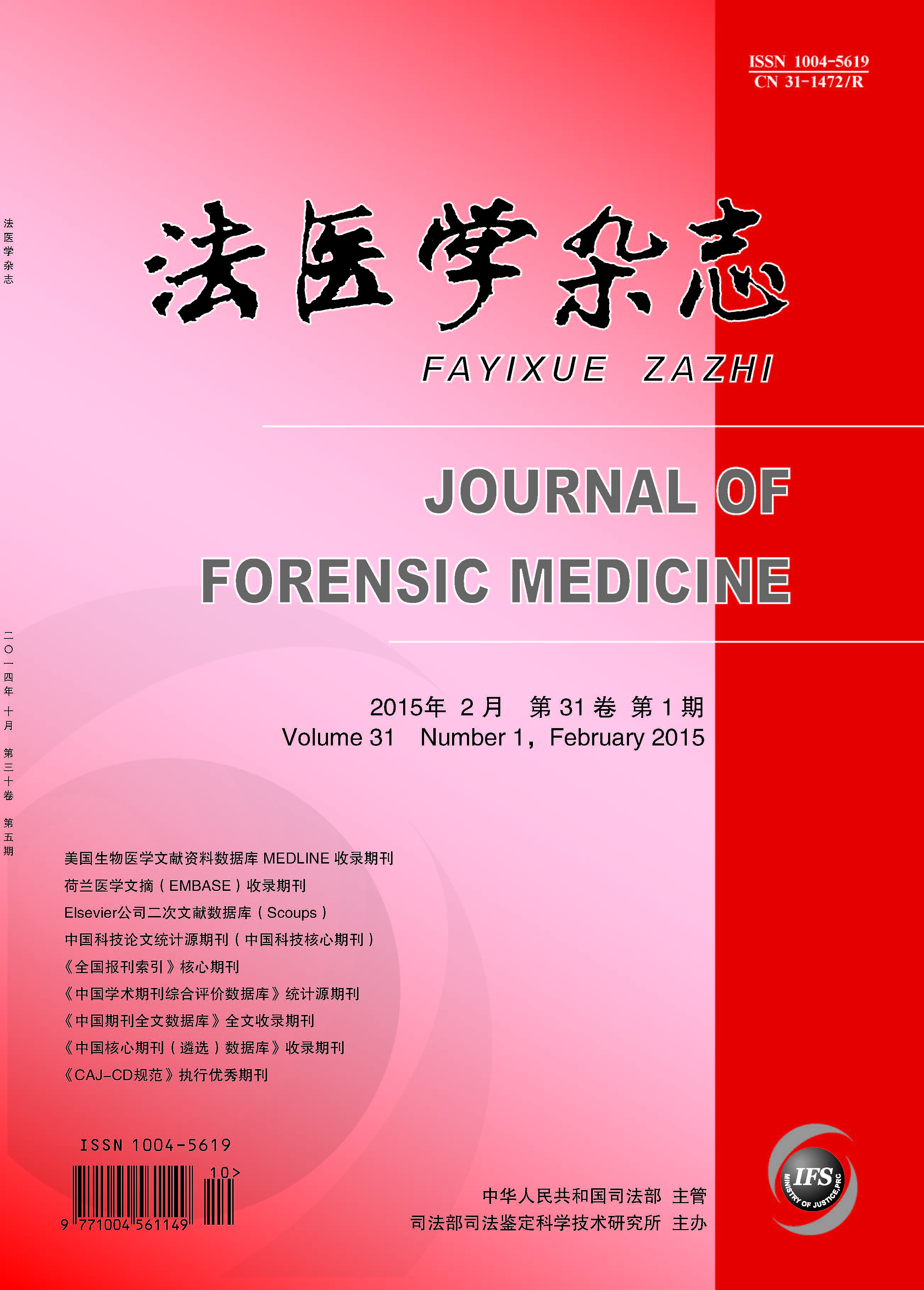|
|
Relation between Partial Mechanical Injuries and Nature of Death in High-falling Cases: An Analysis of 205 Cases
WANG HUAI-YONG, LUO BIN, SHI HE, ET AL.
2015, 31(1):
34-37.
DOI: 10.3969/j.issn.1004-5619.2015.01.008
Objective To explore the relation between the behavior psychology analysis of partial mechanical injuries and the nature of death in high-falling cases, and provide reference, for such cases. Methods Of 311 death victims of high-falling injuries collected from 2008 to 2013, 205 cases were associated with partial mechanical injuries. The characteristics of injury formation, preliminary crime scene traces, fatal injury of high-falling, and text messages were all retrospectively analyzed. Results According to the investigation of preliminary crime scene traces, fatal injury of high-falling and text message, there were 86 suicide, 24 accident and 95 uncertainty in the 205 cases. According to the behavior psychology analysis of partial mechanical injuries, there were 80 suicide, 11 accident, and 4 homicide in the 95 uncertainty cases. Conclusion The partial mechanical injuries uncertainly caused by high-falling correlate with the manner of high-falling death. According to the behavior psychology analysis of the partial mechanical injuries in high-falling death cases, the presumption of high-falling death is usually accurate.
Related Articles |
Metrics
|


